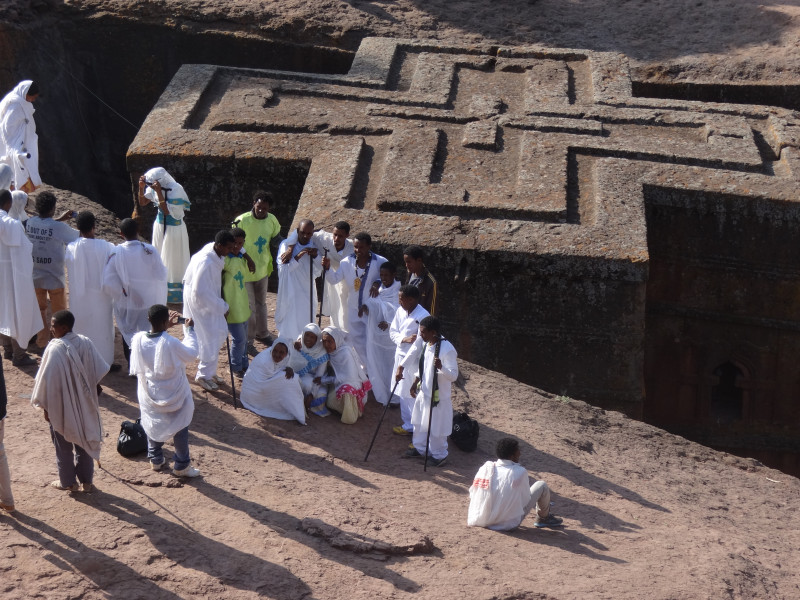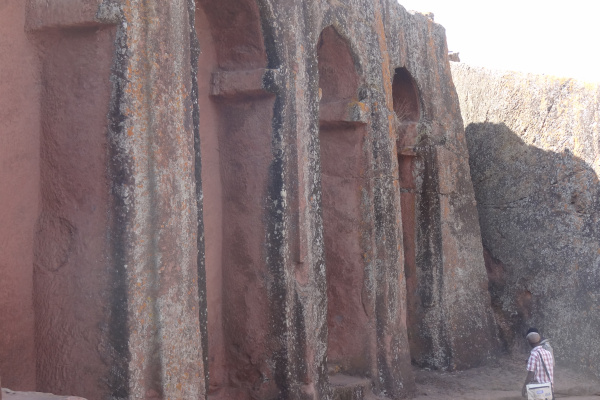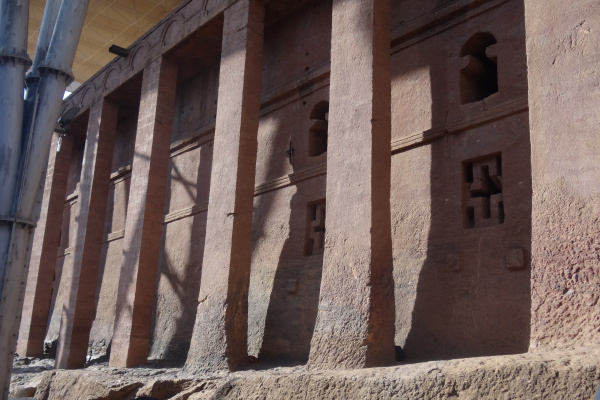The rock churches of Lalibela
Presentation
The rock churches of Lalibela are internationally famous and are sometimes even called the “eighth wonder of the world”. Lalibela is also known as the Black Jerusalem.
Physically built into the rock in which they rise, these monolithic churches were built in the 12th century during the reign of King Lalibela, but some have been dated to the 10th century. There are eleven churches, grouped into three groups.
The Northern Group: Bete Medhane Alem, home of the Cross of Lalibela is the largest monolithic church in the world. It is linked to Bete Maryam (probably the oldest of the churches), Bete Golgotha (known for its art and containing the tomb of King Lalibela), Selassie Chapel and Adam's Tomb.
The West Group: Bete Giyorgis, the most famous and the most finely executed and the best preserved.
The Eastern Group: Bete Amanuel, bete Merkorios, Bete Abba Libanos and Bete Gabriel-Rufael.

Richly documented monograph on Lalibela
Long awaited, a richly documented and illustrated monograph finally allows us to learn more about the mysteries of the city of Lalibela, in Ethiopia.
Listed as a World Heritage Site since 1978, the monastic city of Lalibela (Ethiopia), formerly known as Roha, is one of the main holy places for Orthodox Christians in Ethiopia. Famous for its numerous monolithic churches dug into the rock in the 12th century, at an altitude of more than 2,500 m, this new Jerusalem desired by King Lalibala (this is the original spelling of his name) is today, too, a must-visit place for any visitor wishing to explore the soul of Ethiopia up close.
This magical and serene place, a true islet lost in the mountains of the Amhara region, has long awaited a monograph in French capable of revealing some of its mysteries.
This is done with Lalibela, capital of monolith art of Ethiopia, a study of nearly 400 pages (Lalibela, capital of monolith art of Ethiopia) signed by the anthropologist Jacques Mercier and by the specialist in Eastern Christian arts Claude Lepage.
The dense and well-documented analysis makes it possible to clarify many points about the time of construction of the site, the way in which it developed and was known abroad, its use over the centuries, its hidden treasures, the artists who contributed to its greatness and, finally, the current evolution of the churches.
An essential book, therefore, which timely highlights the religious plurality of Africa, its artistic and heritage wealth and its contribution to the history of humanity (Jeune Afrique).



